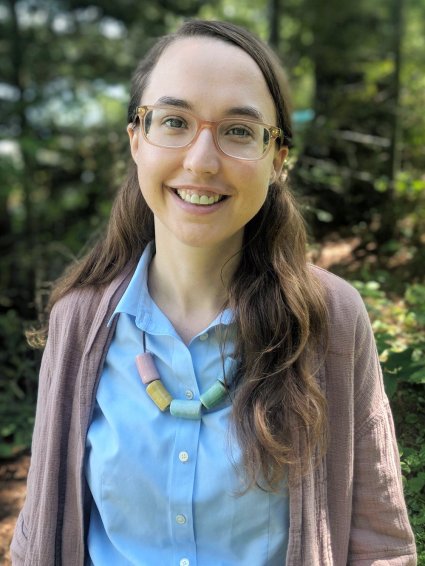UCSB Prof Helped Shape Landmark Climate Bill, Calls for Santa Barbara to Cut Red Tape
Dr. Leah Stokes Advised Key Senate Democrats on Hard-Won Legislation but Frets About Local Regulations

Dr. Leah Stokes may have helped craft the most significant piece of climate legislation in U.S. history, but she’s having a heck of a time electrifying her Santa Barbara home. “It’s a lot of red tape,” she said. “Our city really does not make it easy.”
Stokes, an associate professor of environmental politics at UCSB, was among the policy advisors who worked with Senate Democrats on the $369 billion climate and tax deal announced with great fanfare last week after a year of bruising negotiations. A vote is expected in the coming days. In addition to jump-starting clean energy production on a mass scale, the package features a raft of incentives for everyday Americans wanting to live greener lives, including tax credits for electric vehicles and sustainable home improvements.
We spoke to Stokes Monday about the bill, the compromises that were necessary to make it happen, and Santa Barbara’s role in fighting the climate crisis. This is an edited version of our conversation.
The bill is obviously a major achievement, but some environmentalists are worried about its fossil-fuel provisions, like requiring new lease sales for oil drilling in the Gulf of Mexico and Alaska. What are your thoughts on that? Look, provisions that require lease auctions are not ideal. We don’t want any new fossil-fuel development, and scientists tell us we can’t have any new development and still limit warming to 1.5 degrees. But even though the leases are required doesn’t mean fossil-fuel companies will buy them. And it doesn’t mean they’re going to develop them, because we’re going to make it financially less profitable to do so with royalty rate increases and other steps in the process. You saw that here in Santa Barbara. I’ve been involved in trying to stop drilling in our own county.
So we have to be clear-eyed. Although we might spend a lot of time thinking about these provisions and worrying about their impacts, from a climate perspective, they’re pretty small compared to the rest of the bill. An analysis came out today from Energy Innovation, a nonpartisan research group, which shows that the climate benefits of the bill are 24 times larger than the climate costs.
What parts of the legislation are you personally excited about? The consumer-facing incentives. I worked on those to help people afford heat pumps. That’s going to be really important in Santa Barbara County, where more and more people are going to need air-conditioning because our county has actually warmed faster than the rest of the country.
If you put in a heat pump, you can both heat and cool your home efficiently without using gas, and that will help people get off SoCalGas, which again, I’m personally excited about because I think SoCalGas is not a good company. They were the ones who engaged in all that deceptive messaging where they sent texts to people in the community and lied about the vote to ban gas in new construction, which we managed to pass in Santa Barbara.
Overall, I’m happy there’s going to be money to help people pay for an induction stove, hot water heater, that kind of stuff — everything to help Americans electrify their homes.
Have you outfitted your home yet? I’ve been working on it, and I got to say, the city makes it really difficult. We have a lot of bad rules. For instance, I can’t put an electric vehicle charger on the front of my house. It has to be on the side of my house. Like, what? That’s stupid.
We should be thinking about how we are going to make it easier for people to put solar on their roof, to put in an electric vehicle charger. We should be thinking about how we can speed up permitting, especially if we want people to do these things legally, on the books.
What else can the city do to help fight the climate crisis? I think the city needs to be putting more effort into bike infrastructure. People want to bike in our community, and they do. If you go along the Modoc bike lane, for example, there’s always tons of people. In fact, just the other day, I was biking along that lane and I came across about 3,000 riders. It was like some kind of group ride. It was amazing.
But people want to feel safe, too. And I don’t think that our community is doing enough to create protected bike lanes, really good ones that have actual barriers or that are elevated. We live in such an amazing climate. Why don’t we have better bike infrastructure here?
At the county level, we need to keep fighting oil drilling in our backyard. We’ve had some recent successes, like at Cat Canyon.
Not long ago, the threat of climate change felt pretty abstract. Now it feels very real. When did that happen? I think it’s because the American people are seeing climate change in their backyards. A hundred million people in July experienced extreme heat all at once in one week. Sixty million people are under extreme drought. Santa Barbara is on the front lines of that. Our community is projected to become a desert in the coming decades if we don’t get on top of this. I think all of us are feeling the impacts of the water shortages. So yeah, I think so many Americans have really woken up to this climate crisis and they really want Congress to act.
Support the Santa Barbara Independent through a long-term or a single contribution.




You must be logged in to post a comment.